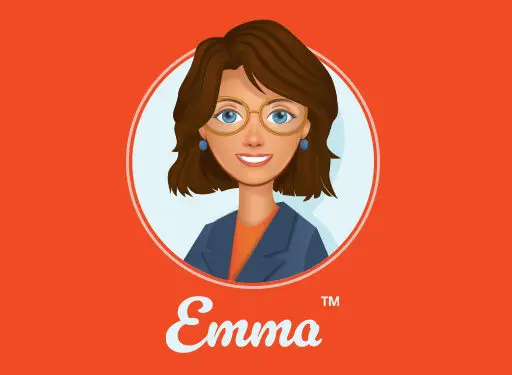Here’s an uncomfortable truth: your HR technology might be making your job harder, not easier.
You know that feeling. It’s the knot in your stomach as open enrollment season creeps closer. Then the sinking sensation as waves of employee emails hit your inbox, full of questions a good benefits admin system would have already answered. And there’s the maddening hours spent pulling together reports from three different platforms that don’t play nice together.
Why HRIS for benefits management isn’t always the right fit
If it sounds familiar, you’re not the only one. HR teams everywhere are drowning in unnecessary complexity. The right technology could make things smoother, but the wrong choice can lock you into years of wasted money, wasted time, and migraine-inducing frustration.
The stakes couldn’t be higher. Get this wrong, and you might be signing up for years of missing functionality, poor support, and extra work. And a frustrating contract with hidden fees that get you stuck.
Choose the wrong system, and you risk:
- Years of missing functionality and broken workflows
- Hidden fees that balloon your budget
- Endless admin hours that should’ve been automated
- Poor support that leaves your team stranded in high-stakes moments and begging for help from internal IT teams
That’s why the best HR teams aren’t just managing open enrollment each fall — they’re delivering personalized benefits experiences that drive employee engagement all year long.
Get it right, and benefits become a powerful tool to attract and retain top talent, improve employee engagement, and position HR as a strategic driver of company success. The first fork in the road: HRIS Module vs. a benefits partner.
Every benefits technology purchase starts with the same fundamental question: Should you go with a module that bolts onto your HRIS system or a specialized partner and service model that excels at benefits and integrates with your HR tech stack and your benefits providers? This isn’t just a technical decision, it’s a philosophical one about the future of your benefits strategy.
The case for best-of-breed benefits administration solutions
Specialized solutions usually deliver a better experience for you and your employees along with cost predictability. You get what you pay for, without the unwelcome surprise of hidden fees. They’re created by teams focused on solving one problem — and solving it really well. Implementation tends to be quicker and come with a whole lot more support. And your ability to have the solution customized to your needs usually runs deeper.
These best-of-breed systems are built to adapt. As a business grows and changes, so do they. Because of their tight focus, and continued investment, they’re able to stay ahead of the curve, while bloated all-in-one systems lag, costing you productivity and flexibility.
Here’s what that looks like in practice:
- Faster rollouts of new tools, since development is focused instead of spreading thin
- Easier integration with existing providers, avoiding the “all-or-nothing” trap
- Regular updates shaped by real employee and HR feedback
- Greater freedom to swap or upgrade other systems without disrupting everything
- Flexibility to scale as the workforce expands or shifts
- Cost containment and predictability
In short, best-of-breed solutions give HR leaders a foundation that grows with their people. They’re not just keeping pace with change — they’re shaping how teams work, adapt, and thrive in the future.
The hidden risks of all-in-one HR technology
Comprehensive HRIS tech platforms promise simplicity through consolidation. One system, one contract, one place where your data lives, and one company to curse if things go sideways.
The trade-off is risk, rigidity, lack of support, and hidden costs. Often, the “all-in-one” pitch ignores the fact that these solutions come with additional modules, integrations, and ongoing maintenance — all of which come with separate, expensive charges.
When you opt for all-in-one HR technology, you’re betting that one system can do it all — payroll, employee data management, time and attendance tracking, recruiting, performance, and benefits administration.
And that’s a big risk on a bet that rarely pays off. The truth is, when you’re a jack of all trades, you’re a master of none.
Look closely during demos and you’ll spot the tells, like the client service team that clearly understands payroll but fumbles during the benefits administration conversation.
Smart buyers dig into this during the evaluation process and ask tough questions:
- How long have benefits been part of their main system?
- Was it built in-house or tacked on later?
- Will we get support from benefits experts, or just a general help desk?
- What additional support services are available (compliance, data security, engagement and decision support, service center)
The way they answer questions like these will reveal if the platform can truly meet your needs, or if you’re just setting your team up for frustration and mounting costs down the line.
SaaS vs. licensed software: Which benefits solution fits your HR needs?
How the software is delivered matters, too. It shapes everything from your budget to your team’s daily experience.
Licensed software feels like ownership — you buy it, install it, it’s yours. But ownership means your IT team is responsible for updates, security patches, server maintenance, and backup strategies. In benefits administration, where regulatory rules change often, it can quickly become a big burden. And if you fall behind on those updates, you’ll be risking compliance fines, security breaches, and outdated workflows that drain HR’s time.
SaaS (Software as a Service) flips the script. You don’t buy the software — you subscribe to a service that comes with more than just software. Updates are automatic. These cloud-based solutions are designed to be flexible, customizable, and configurable. Because of that, they scale with your business and keep you compliant by default, avoiding the costly technical debt that builds up with older licensed systems.
All of this frees you and your team to focus on your people, your benefits strategy, and every other thing on your to-do list, instead of worrying about system maintenance.
Implementation: How to choose the right benefits tech partner
Most tech disappointments start before you ever go live.
Buying decisions usually center on finding the right features. But implementation is the real make or break moment. A bad implementation can quickly turn into a sunken cost. Even a strong solution on paper can be a nightmare if the rollout is rushed or poorly managed.
Great vendors are actually more like partners. They won’t just install software and hand it off. They learn about your current processes, your employee mix, and your goals. They create a project plan with milestones and clear timelines. And they customize and configure it to fit your organization.
Most importantly, they assign seasoned experts who know benefits and benefits administration. You don’t need junior staff learning on your dime. You need implementation specialists who’ve done this more times than they can count. They can spot potential problems before they spiral.
The process should include comprehensive testing, data validation, integration verification, and change management support. A good partner helps with change management communication to employees, trains your team, and explains ongoing support procedures.
Red flags to watch for:
- Vague timelines
- No detailed plan
- Few or no dedicated resources
- Responses like “we’ll figure it out later”
Ignore these red flags, and you could be stuck with a system that never works right — burning budget, morale, and leadership trust in HR.
Client support: Why it’s critical in benefits administration
Benefits administration isn’t a “set and forget” thing. Laws and regulations change. Employees have questions. Integrations need upkeep. The client service you get makes or breaks your experience.
Everyone claims they’re focused on service excellence. But you need concrete evidence, and client retention tells the real story. High turnover usually means trouble, regardless of what the sales team promises.
For example, bswift retains 98% of its clients and covers more than 16 million lives — proof that when service is done right, it makes all the difference.
Talk with current clients, ones who’ve used the solution for at least two years. Ask them:
- What’s been your experience during open enrollment?
- How quickly are issues resolved?
- Do you feel supported, or like a ticket number?
The best partners provide dedicated account teams. They get to know your benefits programs, your employee demographics, and your company’s culture. They check in regularly, proactively share about regulatory updates, and flag changes and platform optimization opportunities.
And they also bring essential benefits expertise, too. A generalist won’t cut it when you’re navigating COBRA, ACA compliance, or dependent verification. Some partners even offer extra support during big events like acquisitions and open enrollment.
In short, they treat your success as their success.
Personalization: The keys to benefits engagement and utilization
Benefits administration isn’t just about open enrollment or decision support — it’s about creating a year-round benefits experience that feels personal and actionable for each employee. When they see benefits as tools to support their lives — not just a one-time task — employees engage more deeply and use them more effectively.
Personalization makes that possible. The best benefits admin solutions provide tailored wellness recommendations, healthcare nudges, and cost-saving opportunities that drive engagement and measurable value. This ongoing support builds loyalty and delivers real savings for employers — all while improving employees’ quality of life.
Finding the right benefits partner helps you bring together smart technology, actionable data, and proactive tools to make benefits simple, effective, and meaningful.
How to evaluate AI for HR and benefits administration
AI shows up in almost every sales pitch these days. But spoiler: Not all AI is useful.
The best uses of AI in benefits administration save HR time and improve the employee experience. Think automated dependent verification that catches eligibility issues before they become compliance problems, or a platform intelligence that can answer benefits questions, tailor plan recommendations, and seamlessly hand employees off to a live agent when needed.
The best AI for HR isn’t like ChatGPT or Google Gemini. It’s just quietly automating tasks, spotting trends, and surfacing real-time data and actionable insights. It helps your team better understand and manage healthcare spend.
But AI also raises questions about how data is used, what decision review looks like, and if there’s human oversight when it matters most. The wrong approach here risks compliance violations, bad employee experiences, and reputational damage if AI goes unchecked.
The best benefits administration companies take a Mindful AI approach. They use AI to support human judgment rather than replace it.
Making the decision that serves you long term
The right benefits administration solution should feel almost invisible — it just works. It adapts to your needs, integrates with your tools, and scales as your organization grows and changes.
Most importantly, it’s a solution backed by more than just a vendor, it’s a partner that genuinely cares about your success. You should get a team that answers the phone, proactively checks in and suggests improvements, and celebrates your wins.
Look for vendors with deep benefits administration expertise, not just general HR technology knowledge. The best choice isn’t always the cheapest or the one with the most bells and whistles. In fact, looking like the most affordable option is a marketing trick.
Low sticker prices almost always mean hidden fees for things like additional users, support, and integrations. Plus, you’re likely to get poor support and other expensive headaches later, too.
The best choice is always the one that fits your needs and is backed by a team you trust to support your long-term success.
Your benefits program should be a competitive advantage, not an administrative burden. The right technology partner makes that possible — but only if you choose wisely.
The decision you make shapes the kind of strategy work and the volume of administrative work you’ll do in the coming years. Choose a partner, not just a platform.
If you choose wrong, you’ll spend years digging out of a hole. But if you select the right one, your future self will thank you. And there’s a good chance your company’s leadership will thank you, too.
Download the benefits administration buyer’s guide and vendor scorecard
Ready to start evaluating benefits administration partners? Our step-by-step guide equips you with everything you need to weigh your options, prioritize features, and find the perfect solution for your organization. Plus, get access to a free vendor scorecard to compare platforms side by side.













